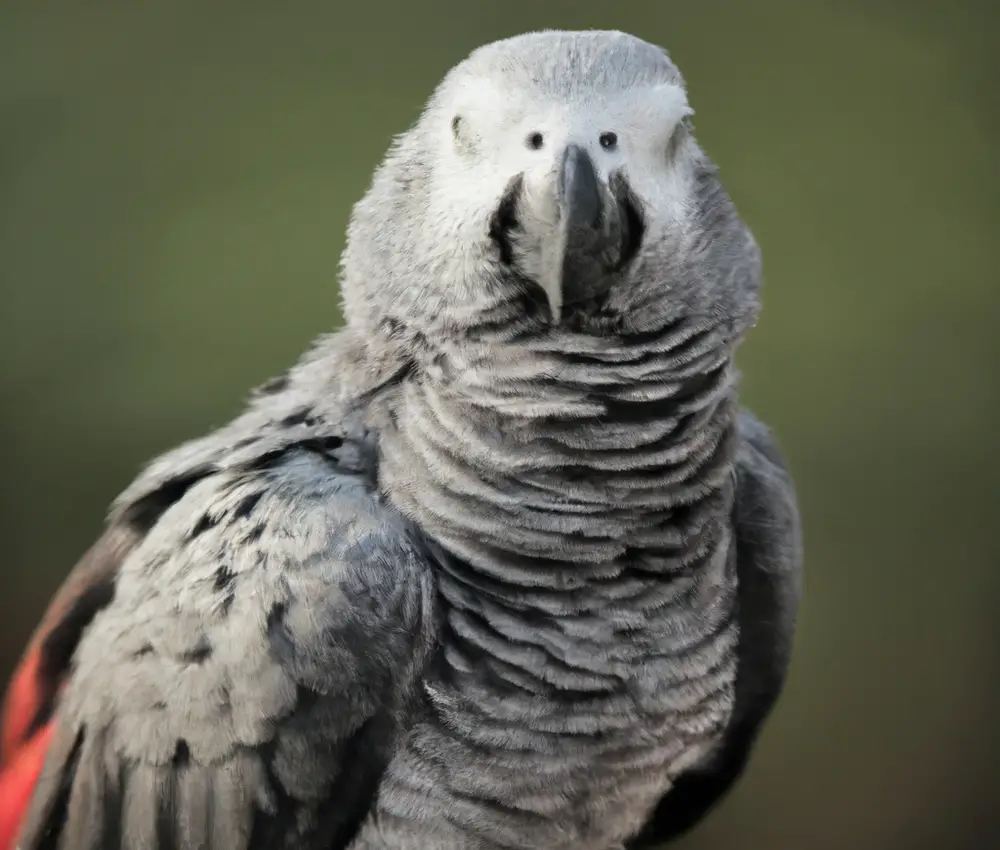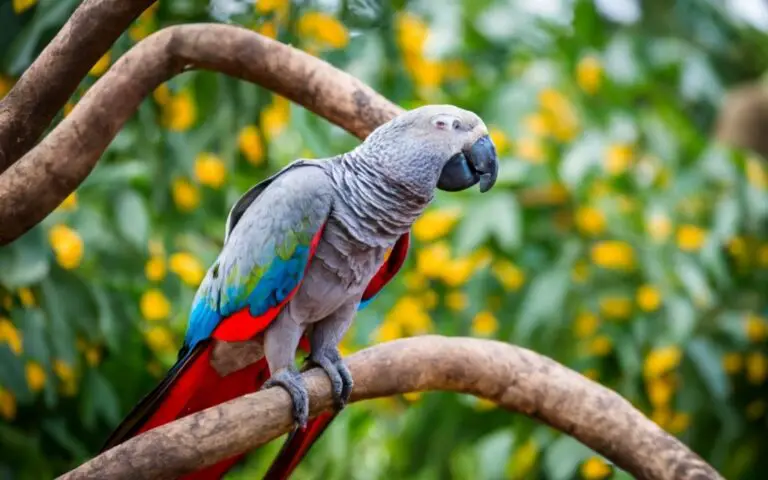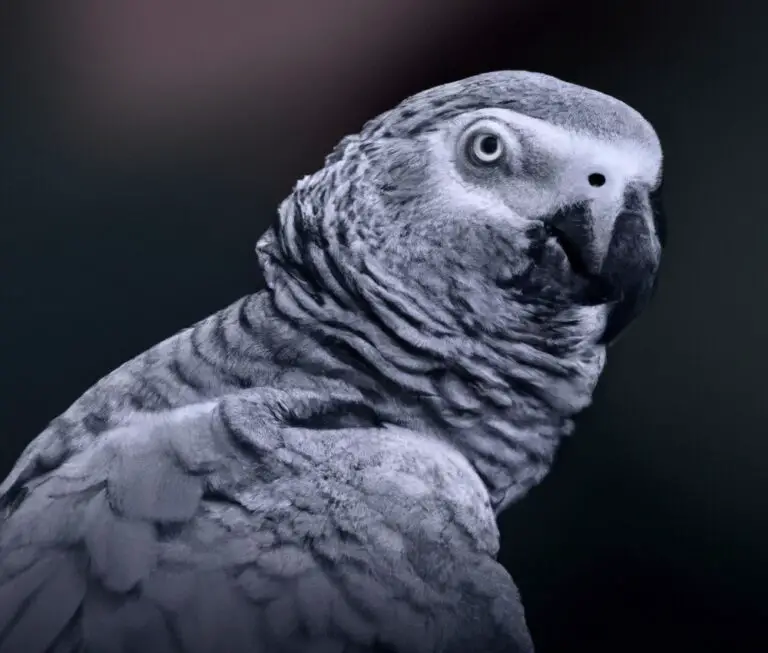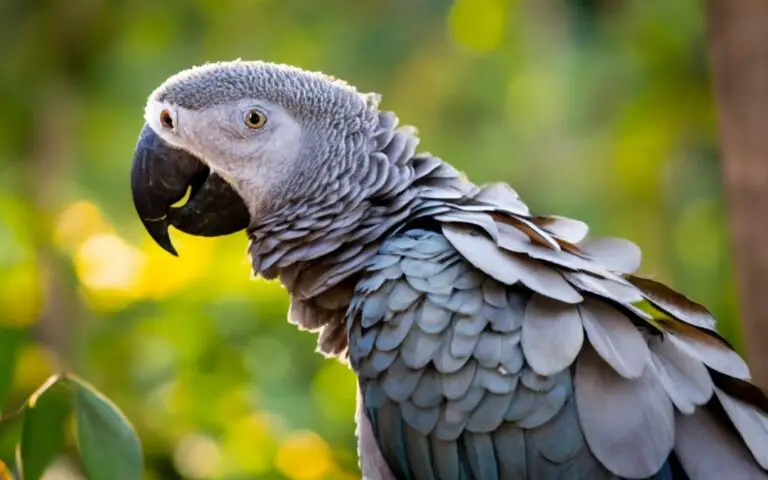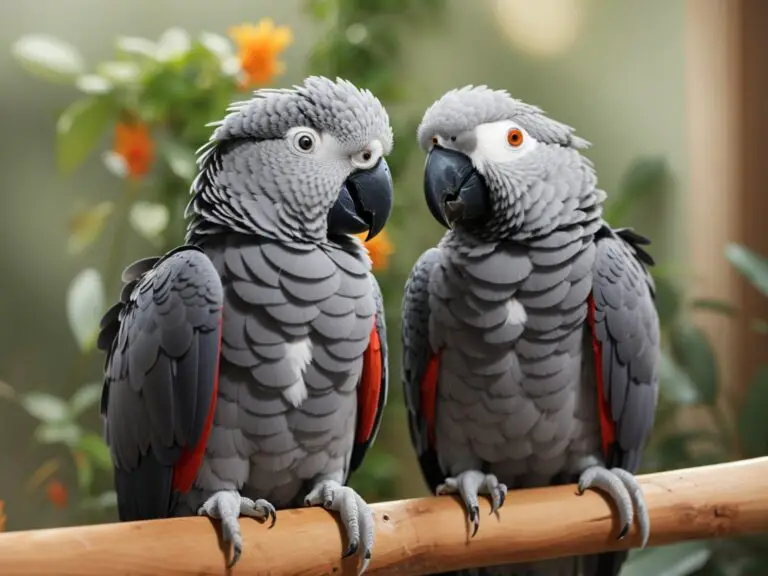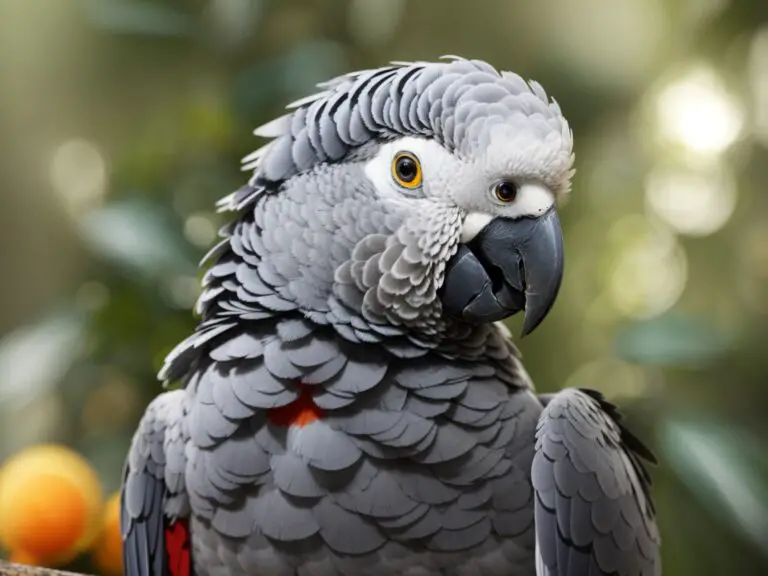How Do African Grey Parrots Protect Themselves From Predators?
Key Takeaways:
- African Grey Parrots mimic sounds to confuse and ward off predators.
- They have strong beaks which they can use to defend themselves against attackers.
- These birds are highly intelligent and can problem solve to avoid dangerous situations.
- African Grey Parrots have keen eyesight and can detect potential threats from a distance.
Let’s take a moment to marvel at the African Grey Parrot, a master of survival in the vibrant jungles and forests of Africa. These intelligent and captivating creatures have honed their defenses to match their stunning physical appearance.
With an array of camouflage techniques, problem-solving abilities, and a knack for social cooperation, African Grey Parrots have developed an impressive arsenal to outsmart and evade predators.
In this article, we will delve into the fascinating realms of their physical defenses, their clever problem-solving skills, their cooperative nature, and even their communication with humans. Prepare to be amazed as we unravel the secrets of how African Grey Parrots protect themselves from the ever-present threat of predators.
| Defense Mechanism | Description |
|---|---|
| 1. Vocalization | African Grey Parrots have a loud and distinct alarm call that warns other group members of potential threats. |
| 2. Mimicry | They can mimic other bird calls and environmental sounds, blending in with their surroundings and confusing predators. |
| 3. Intelligence | These parrots are highly intelligent and can assess dangerous situations, allowing them to make quick escape decisions. |
| 4. Flight | African Grey Parrots are strong fliers and can quickly take to the air to evade predators. |
| 5. Camouflage | They have excellent natural camouflage, blending in with tree bark or foliage, making it harder for predators to spot them. |
Physical Appearance and Camouflage Techniques
African Grey Parrots use their physical appearance and camouflage techniques to protect themselves from predators.
Coloration and Feather Patterns
African Grey Parrots have distinct coloration and feather patterns that contribute to their ability to protect themselves from predators.
They have a predominantly grey plumage, which allows them to blend in with the bark of trees in their natural habitat.
This helps them remain unnoticed by potential predators.
Additionally, their bright red tails provide a striking contrast, which can serve as a warning signal to predators.
This coloration may indicate that they are not an easy target and can deter potential threats.
The combination of their grey plumage and red tails allows African Grey Parrots to effectively camouflage themselves and minimize the risk of predation.
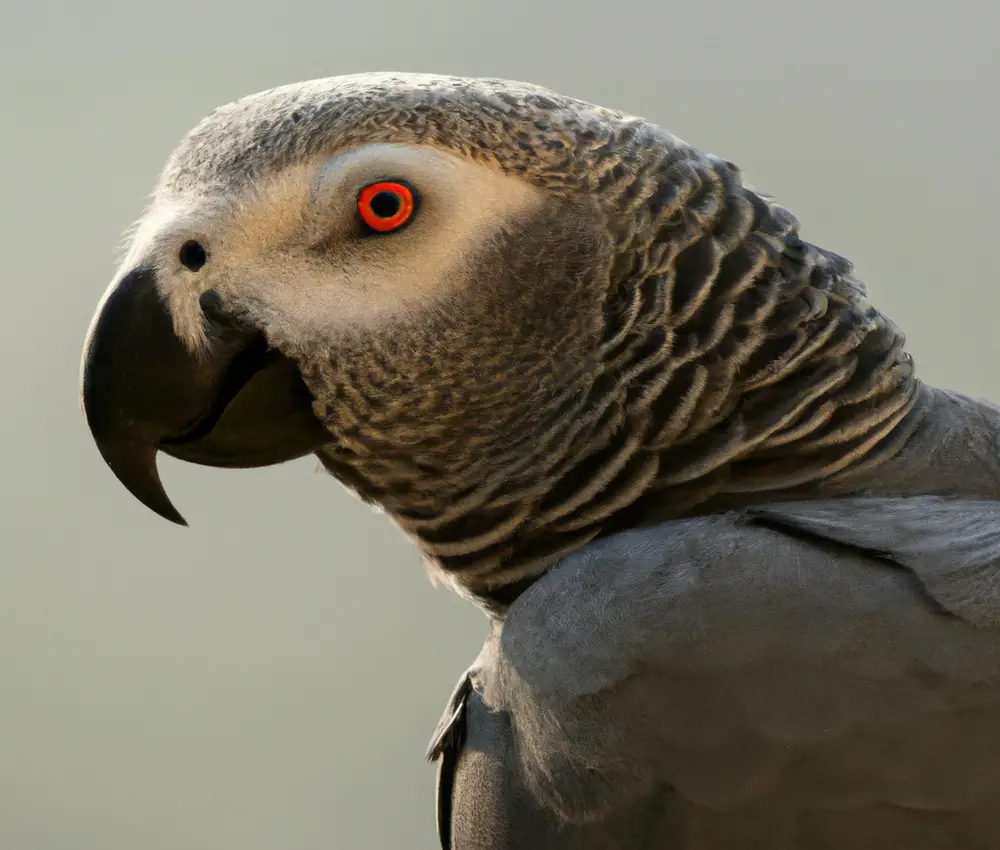
Mimicry of Natural Sounds and Vocalizations
African Grey Parrots are renowned for their impressive ability to mimic natural sounds and vocalizations.
They can replicate a wide range of sounds, from other bird calls and animal noises to human speech and even mechanical sounds.
This mimicry serves as a defense mechanism by allowing them to blend in with their surroundings and confuse potential predators.
By imitating the sounds of other animals or objects, they can create the illusion of safety and divert attention away from themselves.
This skill not only helps protect them in the wild but also makes them popular and entertaining pets.

Utilizing Environment for Concealment
African Grey Parrots are skilled at utilizing their environment for concealment.
They have the ability to blend in with their surroundings, using foliage and tree branches to hide from predators.
Their gray feathers provide excellent camouflage in forested areas.
They also have the intelligence to choose secure roosting spots that offer additional protection.
By staying hidden and blending in, they increase their chances of avoiding detection by predators.
Intelligence and Problem-Solving Abilities
African Grey Parrots possess remarkable intelligence and problem-solving abilities that aid them in protecting themselves from predators.
Learning Complex Skills for Defense
African Grey Parrots have the ability to learn complex skills for defense.
They can mimic the sounds of other animals and use vocalizations to deter predators.
They also utilize their environment for concealment, blending in with their surroundings.
By recognizing threats and employing tactical strategies, they are able to outsmart predators and protect themselves effectively.
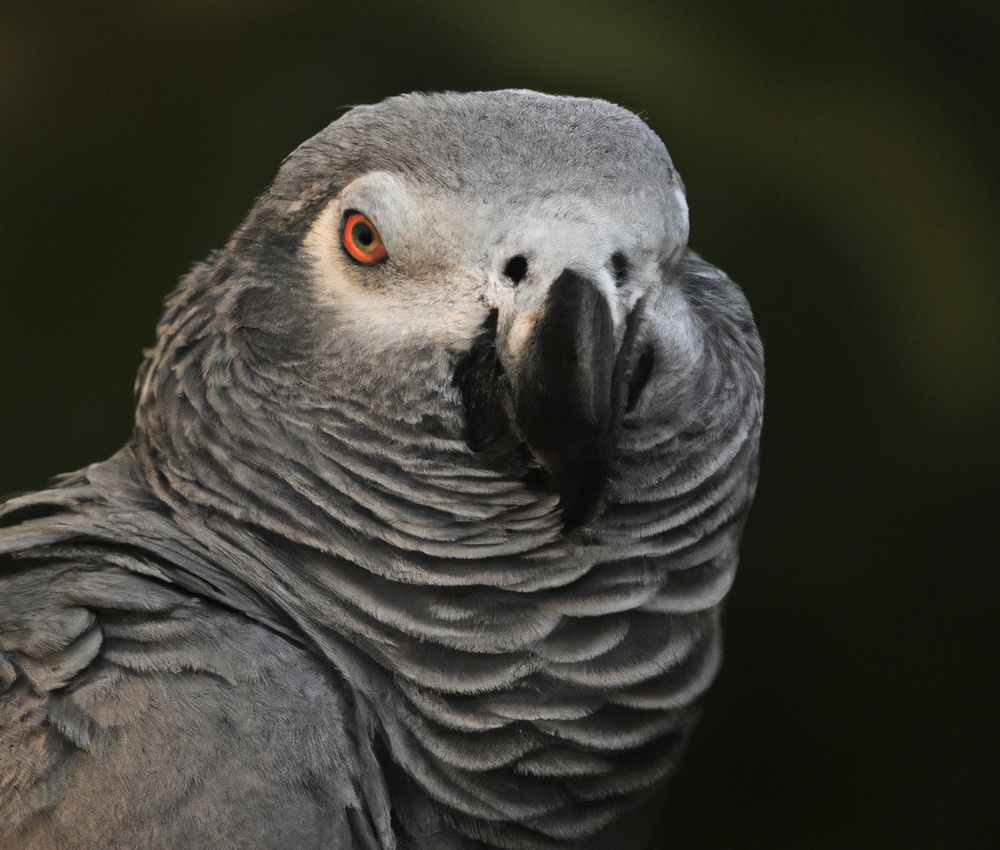
Recognizing and Remembering Threats
African Grey Parrots have remarkable memories and are highly observant when it comes to recognizing threats. They can remember specific visual cues and associate them with danger.
Their ability to remember the sounds of predators also helps them identify potential threats.
Additionally, these parrots have a keen sense of awareness and can quickly recognize dangerous situations, allowing them to take appropriate defensive actions.
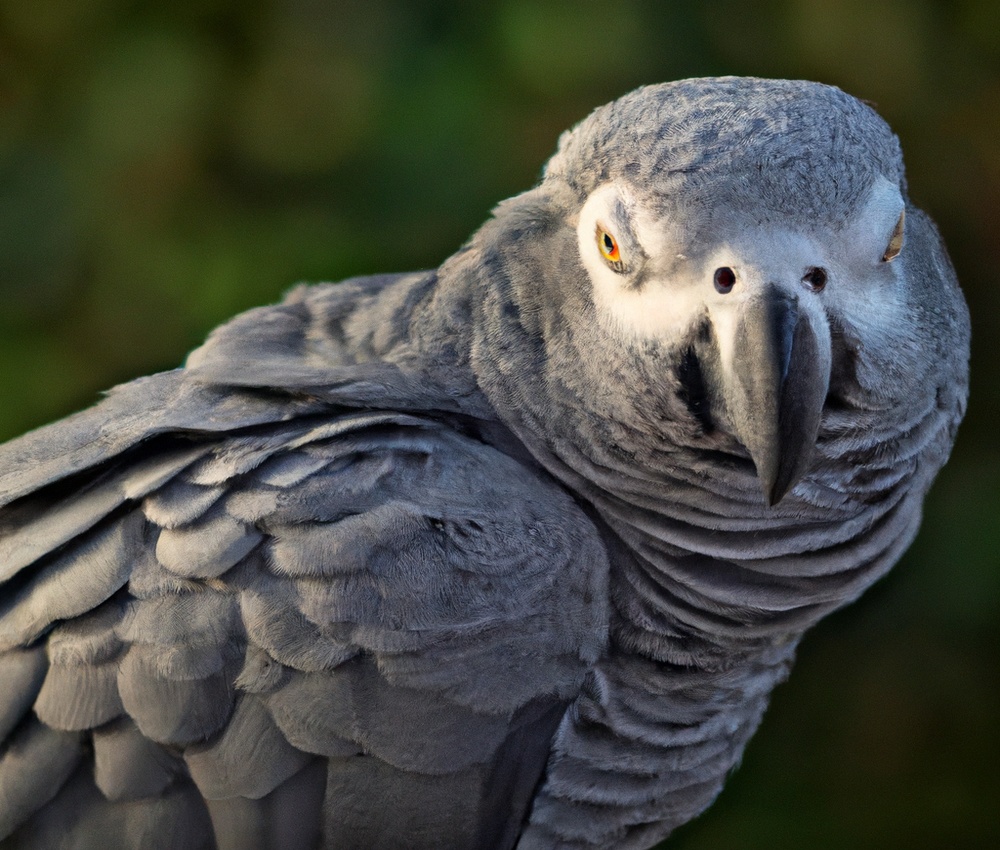
Employing Tactical Strategies to Outsmart Predators
African Grey Parrots employ various tactical strategies to outsmart predators.
- Physical Appearance and Camouflage Techniques: They use coloration and feather patterns to blend into their surroundings, making it difficult for predators to spot them.
- Mimicry of Natural Sounds and Vocalizations: African Grey Parrots have exceptional mimicry skills and can imitate the sounds of other birds and animals, confusing predators and diverting their attention.
- Utilizing Environment for Concealment: They are skilled at hiding and using the surrounding environment for protection. They seek out dense vegetation or tree cavities to stay hidden from predators.
By employing these strategies, African Grey Parrots increase their chances of avoiding predation and staying safe in their natural habitats.
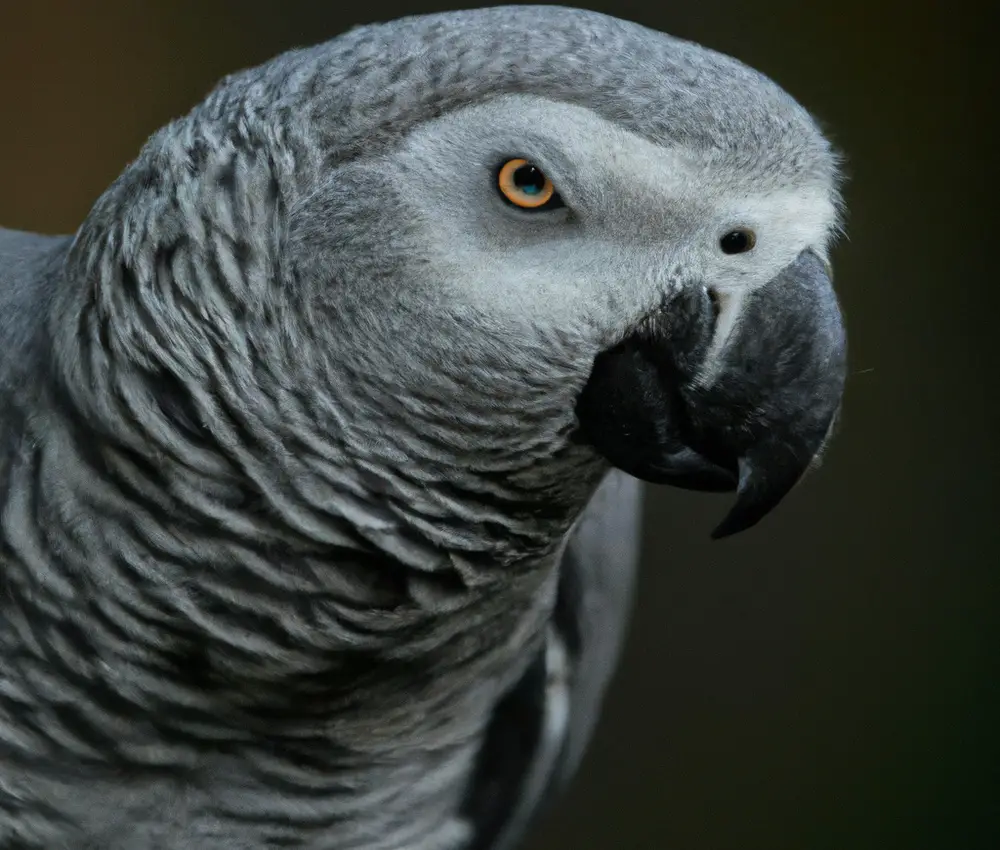
Social Behavior and Strength in Numbers
African Grey Parrots rely on their social behavior and strength in numbers to protect themselves from predators.
Forming Strong Bonds within Flocks
African Grey Parrots form strong bonds within their flocks by spending time together, engaging in social activities, and grooming each other. This bond helps them find safety in numbers and provides a support system for protection against predators.
Through their social behavior, they create a strong sense of community and cooperation within their flock.
Cooperative Defense Mechanisms
Cooperative defense mechanisms in African Grey Parrots involve working together as a group to deter predators. Here’s how they do it:
- Mobbing: African Grey Parrots will gather in large groups to confront and harass predators, such as hawks or snakes. By mobbing the predator, they create confusion and make it difficult for the predator to target any individual bird.
- Alarm calls: When one parrot spots a predator, it will emit loud alarm calls to alert the rest of the flock. This helps to mobilize the group and coordinate their defense strategy.
- Strength in numbers: By sticking together in flocks, African Grey Parrots increase their chances of survival. Predators are less likely to attack a large group, preferring easier and more isolated targets.
- Shared lookout duty: While some parrots forage for food, others take on the role of sentinels, keeping watch for potential threats. This division of labor within the group ensures that there is always someone on guard.
These cooperative defense mechanisms not only help protect individual African Grey Parrots, but also strengthen the overall security of the flock. By working together and communicating effectively, they can ward off predators more effectively than if they were on their own.
Alarm Calls and Communication amongst Group Members
African Grey Parrots use alarm calls and communication to alert other group members about potential threats. They have distinct vocalizations for different predators, allowing them to accurately convey the type and level of danger.
This helps the entire flock to take appropriate defensive actions, such as hiding or flying away.
Their ability to communicate effectively within the group enhances their collective safety and survival.
Flight Capabilities and Evasive Maneuvers
African Grey Parrots possess exceptional flying skills and agility to avoid predators. They are also capable of quick acceleration and swift escape techniques.
Exceptional Flying Skills and Agility
African Grey Parrots possess exceptional flying skills and agility, which play a crucial role in their defense against predators. Their powerful wings and strong flight muscles enable them to navigate through their environment with precision and speed.
They can maneuver quickly and make sharp turns to escape from potential threats.
Additionally, their ability to fly at high speeds helps them to outpace predators and reach safer locations. Their agile flight capabilities provide them with a significant advantage when it comes to evading danger.
Quick Acceleration and Swift Escape Techniques
African Grey Parrots have developed quick acceleration and swift escape techniques as a means of protecting themselves from predators. They are capable of suddenly burst of speed to quickly flee from danger.
They can also perform rapid aerial maneuvers to evade predators and find safety.
Their agile flight skills and evasive tactics make them adept at avoiding potential threats in their environment.
Strategic Use of Evasive Flight Patterns
African Grey Parrots are skilled at utilizing evasive flight patterns to protect themselves from predators.
They employ tactics such as erratic flight paths, sudden changes in direction, and quick dives to evade capture.
These strategic maneuvers make it challenging for predators to target and catch them.
Intelligence and Communication with Humans
African Grey Parrots possess high intelligence and are able to communicate effectively with humans.
Bonding with Humans as a Form of Protection
Bonding with humans provides African Grey Parrots with an additional layer of protection. Their close relationship with humans helps create a safe and secure environment.
Parrots can rely on their human companions to provide food, shelter, and a watchful eye for potential predators.
Additionally, humans can offer training and reinforcement to recognize and respond to threats, making the parrots more vigilant and aware of their surroundings. The strong bond between parrots and humans acts as a deterrent to predators, as they perceive the presence of humans as a potential risk.
This bond creates a sense of trust and partnership, enabling the parrots to feel protected and secure in their environment.
Warning Signals and Reinforcing Safety Measures
Warning signals and reinforcing safety measures are essential for African Grey Parrots to protect themselves from predators.
They use various communication methods, such as alarm calls and specific vocalizations when danger is detected.
Additionally, they reinforce safety by staying vigilant, seeking cover, and flocking together to increase their chances of survival.
These behaviors help them stay safe in their natural habitat and in captivity.
Training to Recognize and Respond to Threats
Training African Grey Parrots to recognize and respond to threats is vital for their safety. Parrots can be taught to identify potential dangers such as predators or harmful situations.
By using positive reinforcement and repetition, they can learn to react appropriately, whether it’s by vocalizing an alarm call or seeking shelter.
Training helps them develop the instincts necessary for their survival.
Frequently Asked Questions
Can African Grey Parrots sense danger?
Yes, African Grey Parrots can sense danger.
They have keen senses, including sharp eyesight and acute hearing, which allow them to detect potential threats in their environment.
They are highly observant and can quickly recognize changes in their surroundings that may indicate danger.
Their ability to sense danger helps them stay alert and take appropriate defensive actions to protect themselves.
How can African Grey Parrots protect themselves in captivity?
African Grey Parrots can protect themselves in captivity by utilizing their intelligence and problem-solving abilities.
They can learn complex skills for defense, recognize and remember threats, and employ tactical strategies to outsmart predators.
Additionally, their social behavior and strength in numbers allow them to form strong bonds within flocks, use cooperative defense mechanisms, and communicate through alarm calls.
Their flight capabilities and evasive maneuvers, such as exceptional flying skills, quick acceleration, and strategic use of flight patterns, further enhance their protection.
Finally, their intelligence and communication with humans enable them to bond with their owners, recognize and respond to threats, and receive training to ensure their safety.
Are African Grey Parrots more vulnerable to predators in their natural habitat?
In their natural habitat, African Grey Parrots are indeed more vulnerable to predators.
This is due to their relatively small size and lack of physical defenses.
However, these parrots have developed various strategies to protect themselves, such as their camouflaging abilities, intelligence and problem-solving skills, social behavior, and flight capabilities.
These adaptations help them navigate and survive in their environment.
Final Verdict
African Grey Parrots have unique and effective strategies to protect themselves from predators. Through physical appearance and camouflage techniques, they blend into their surroundings and remain unseen.
Their intelligence allows them to learn complex skills, recognize threats, and employ tactical strategies for defense.
Social behavior and strength in numbers provide added protection, as well as their exceptional flight capabilities and evasive maneuvers. Moreover, African Grey Parrots can form bonds with humans and communicate with them for additional protection.
Overall, these remarkable birds have multiple layers of defense that enable them to thrive in their natural habitat and even in captivity.

